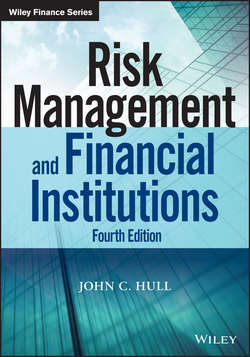Читать книгу Risk Management and Financial Institutions - Hull John C. - Страница 21
На сайте Литреса книга снята с продажи.
PART One
Financial Institutions and Their Trading
CHAPTER 2
Banks
2.3 DEPOSIT INSURANCE
ОглавлениеTo maintain confidence in banks, government regulators in many countries have introduced guaranty programs. These typically insure depositors against losses up to a certain level.
The United States with its large number of small banks is particularly prone to bank failures. After the stock market crash of 1929 the United States experienced a major recession and about 10,000 banks failed between 1930 and 1933. Runs on banks and panics were common. In 1933, the United States government created the Federal Deposit Insurance Corporation (FDIC) to provide protection for depositors. Originally, the maximum level of protection provided was $2,500. This has been increased several times and became $250,000 per depositor per bank in October 2008. Banks pay an insurance premium that is a percentage of their domestic deposits. Since 2007, the size of the premium paid has depended on the bank's capital and how safe it is considered to be by regulators. For well-capitalized banks, the premium might be less than 0.1 % of the amount insured; for under-capitalized banks, it could be over 0.35 % of the amount insured.
Up to 1980, the system worked well. There were no runs on banks and few bank failures. However, between 1980 and 1990, bank failures in the United States accelerated with the total number of failures during this decade being over 1,000 (larger than for the whole 1933 to 1979 period). There were several reasons for this. One was the way in which banks managed interest rate risk and we will talk about that in Chapter 9. Another reason was the reduction in oil and other commodity prices which led to many loans to oil, gas, and agricultural companies not being repaid.
A further reason for the bank failures was that the existence of deposit insurance allowed banks to follow risky strategies that would not otherwise be feasible. For example, they could increase their deposit base by offering high rates of interest to depositors and use the funds to make risky loans. Without deposit insurance, a bank could not follow this strategy because their depositors would see what they were doing, decide that the bank was too risky, and withdraw their funds. With deposit insurance, it can follow the strategy because depositors know that, if the worst happens, they are protected under FDIC. This is an example of what is known as moral hazard. We will talk about moral hazard further in Chapter 3. It can be defined as the possibility that the existence of insurance changes the behavior of the insured party. The introduction of risk-based deposit insurance premiums has reduced moral hazard to some extent.
During the 1980s, the funds of FDIC became seriously depleted and it had to borrow $30 billion from the U.S. Treasury. In December 1991, Congress passed the FDIC Improvement Act to prevent any possibility of the fund becoming insolvent in the future. Between 1991 and 2006, bank failures in the United States were relatively rare and by 2006 the fund had reserves of about $50 billion. However, FDIC funds were again depleted by the banks that failed as a result of the credit crisis that started in 2007.
